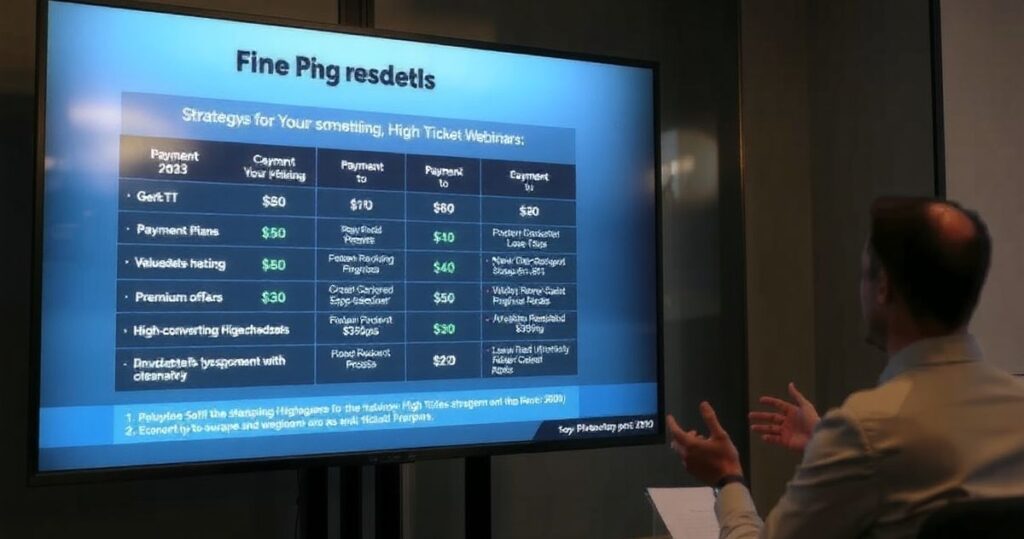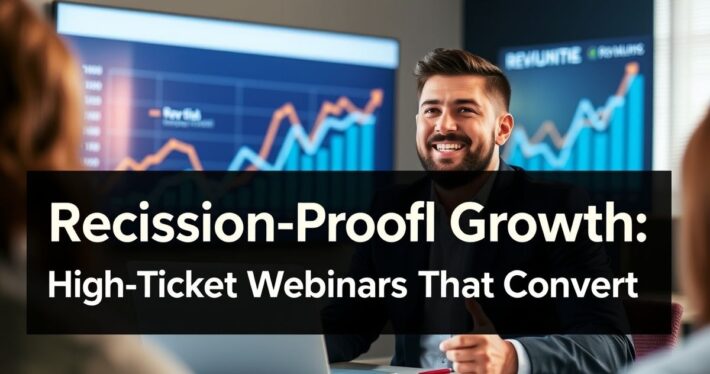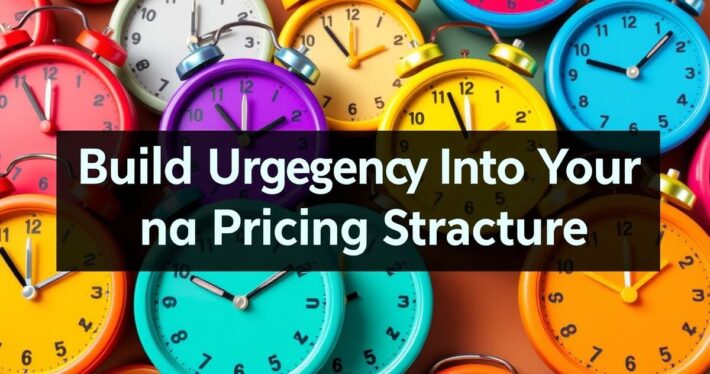Pricing models that work for high-ticket webinar conversions.

In the world of high-ticket webinars, pricing isn’t just a number—it’s a psychological lever. Get it right, and you’ll see conversions skyrocket. Get it wrong, and you’ll leave money on the table—or worse, alienate your audience. So, how do you structure pricing models that not only attract attention but also compel action? Let’s dive into the strategies that work.
Why Pricing Models Matter for High-Ticket Webinars
Let’s face it: high-ticket webinars aren’t your average $47 offer. They’re often $1,000+ investments, which means your audience is scrutinizing every detail. The pricing model you choose can make or break their decision. A well-structured offer doesn’t just justify the price—it makes saying “no” feel like a missed opportunity.
The key is to balance perceived value with affordability. You’re not just selling a product or service—you’re selling transformation. And your pricing model must reflect that.
The 4 Pricing Models That Work
Here are four proven pricing models for high-ticket webinars, along with real-world applications and actionable tips to implement them effectively.
1. The Payment Plan Model
Payment plans are a game-changer for high-ticket offers. Why? Because they lower the barrier to entry while maintaining the perceived value of your product or service.
Let’s say you’re selling a $2,000 coaching program. Instead of asking for $2,000 upfront, you could offer a 4-month payment plan of $500 per month. Suddenly, the offer feels more accessible, and you’re more likely to convert hesitant buyers.
Pro Tip: Use phrases like “Break your investment into manageable payments” to emphasize affordability.
2. The Value Stack Model
This model is all about bundling. The idea is to stack multiple high-value bonuses alongside your core offer to increase perceived value.
For example, if you’re selling a $1,500 webinar on digital marketing, you could include bonus modules on copywriting, social media strategy, and email marketing. The more you stack, the harder it becomes for your audience to say no.
Pro Tip: Use AI tools like our High-Value Bonus Brainstormer to generate bonus ideas that resonate with your audience.
3. The Risk-Reversal Model
People are naturally risk-averse, especially when it comes to high-ticket purchases. A risk-reversal model eliminates that fear.
Think about it: Would you be more likely to buy a $3,000 course if it came with a 30-day money-back guarantee? Probably, right? That’s the power of risk reversal.
Pro Tip: Use our Risk-Reversal/Guarantee Generator to craft guarantees that make “yes” feel like the only logical choice.
4. The Premium Offer Model
Sometimes, the best way to sell high-ticket is to go even higher. The premium offer model involves presenting a deluxe version of your product or service that’s priced significantly higher than your standard offer.
For example, if your webinar is priced at $1,000, you could offer a premium package at $2,500 that includes one-on-one coaching sessions, personalized feedback, and exclusive resources.
Pro Tip: Use scarcity and urgency—like “Only 10 spots available”—to make the premium offer feel even more exclusive.
How AI Tools Can Elevate Your Pricing Strategy
Here’s where technology comes into play. Our AI-powered tools are designed to help you craft pricing models that convert.
- Slide Outline Creator: Use this tool to structure your webinar content in a way that builds excitement for your offer.
- Webinar Offer Builder: This tool helps you create compelling pricing models that stack value and position your offer effectively.
- High-Value Bonus Brainstormer: Generate bonus ideas that multiply the perceived value of your offer.
- Risk-Reversal/Guarantee Generator: Craft irresistible guarantees that eliminate buyer hesitation.
A Real-World Example
Let’s break down a real-world example of how these pricing models can work together.
Meet Sarah, a digital marketing consultant who’s launching a $2,000 webinar on Facebook ads. Here’s how she structures her pricing:
- Core Offer: $2,000 for the webinar + comprehensive workbook.
- Value Stack: Includes bonus modules on Instagram ads and retargeting strategies (valued at $500).
- Payment Plan: 4 monthly payments of $500.
- Risk Reversal: 30-day money-back guarantee.
- Premium Offer: $3,500 for the webinar + one-on-one coaching session (limited to 5 spots).
The result? Sarah increases her conversion rate by 40% and sells out her premium offer within hours.
Common Pitfalls to Avoid
Even with the best pricing models, there are mistakes that can derail your success. Here’s what to watch out for:
- Overcomplicating the Offer: If your pricing structure is too complex, you’ll confuse your audience. Keep it simple and straightforward.
- Underestimating Perceived Value: Your audience needs to see the tangible benefits of your offer. Use testimonials, case studies, and before-and-after examples to illustrate value.
- Ignoring Buyer Psychology: Pricing isn’t just about numbers—it’s about psychology. Use language and positioning that make your offer irresistible.
Final Thoughts
Pricing models for high-ticket webinars are more than just numbers on a page—they’re strategic tools that can dramatically impact your conversions. By leveraging payment plans, value stacks, risk reversals, and premium offers, you can create pricing structures that not only attract but also convert.
And don’t forget: tools like our AI-powered webinar creation ecosystem can make the process easier and more effective. So, what’s your next move? Will you stick with the same old pricing strategy, or will you experiment with models that could transform your conversions?



